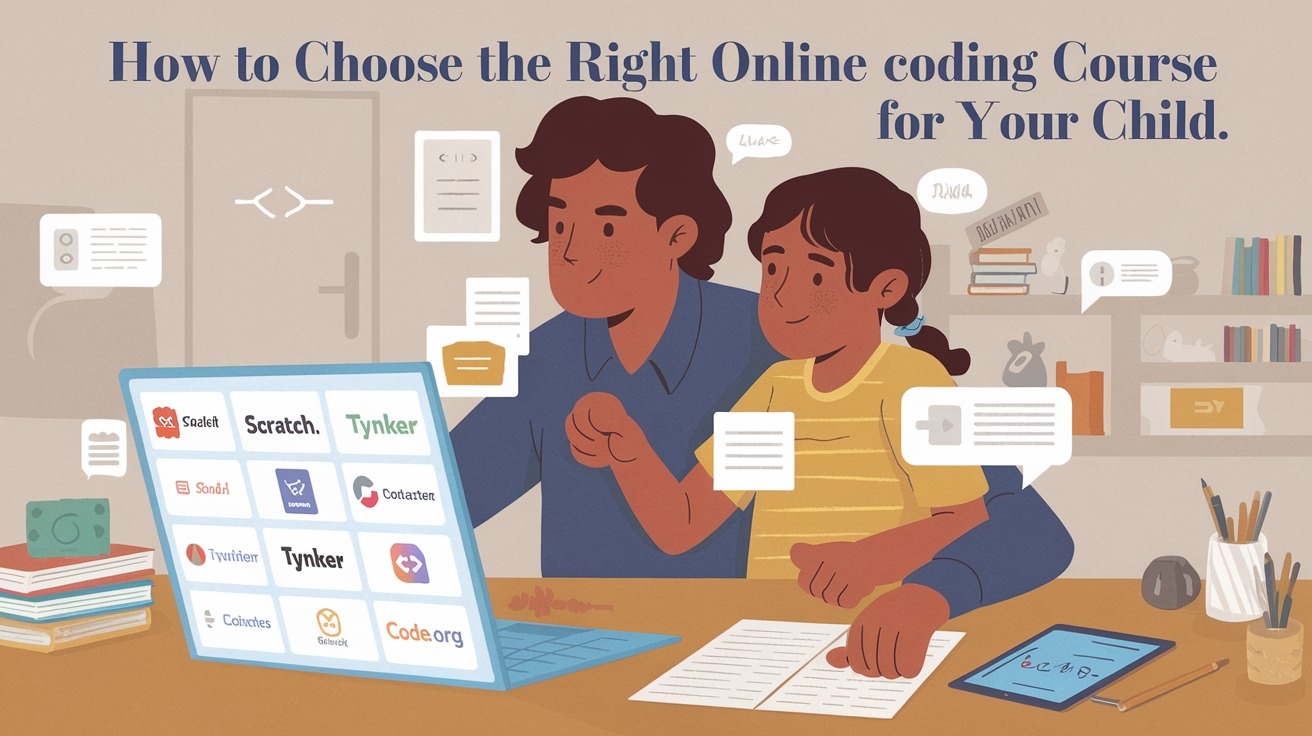How to Choose the Right Online Coding Course for Your Child?

How to Choose the Right Online Coding Course for Your Child
In today’s digital-first world, coding has become as essential as reading or writing. From mobile apps to AI-powered games, children are surrounded by technology—and not just as users, but as future creators. If you're a parent looking to set your child up for success, enrolling them in an online coding course could be the game-changer you're looking for. But with so many options out there, how do you pick the right one?
Let’s break it down with a simple, step-by-step guide.
Why Coding Matters for Kids
Coding teaches more than just typing commands into a computer. It builds critical thinking, creativity, persistence, and logical problem-solving skills. More importantly, it empowers kids to become digital makers rather than just consumers.
To understand the basics and benefits, start with this comprehensive guide on coding for kids.
1. Match the Course with Your Child’s Age
Different age groups need different approaches. Here’s a rough guideline:
-
Ages 5–8: Focus on visual-based platforms like Scratch or Blockly.
-
Ages 9–12: Begin introducing typed code (like Python) alongside visuals.
-
Ages 13+: Dive into real-world programming with JavaScript, Python, or HTML/CSS.
Courses should align with your child’s cognitive level—starting too advanced may frustrate them, while something too basic may bore them.
2. Choose Based on Your Child’s Interests
Kids are more likely to stick with coding if it connects to what they love. Some examples:
-
Storytellers: Platforms that let them animate or script scenes.
-
Gamers: Game development platforms and interactive tools.
-
Tinkerers: Hardware-integrated platforms like Arduino or Raspberry Pi.
-
App lovers: Tools to create real-world mobile apps.
3. Start with Visual Coding Platforms
For beginners, especially younger children, visual languages like Scratch are ideal. Instead of worrying about typos, kids can drag and drop colourful blocks to bring their ideas to life.
Curious where to begin? Explore our detailed overview of Scratch coding for kids to learn why it’s such a great starting point.
4. Look for Project-Based Courses
The best courses don’t just teach theory—they help kids build something. Whether it’s a game, animation, or website, creating real projects keeps learning fun and engaging. These projects also give your child something to be proud of and show off!
5. Review the Curriculum
A quality course should:
-
Start with basics (loops, conditionals, functions)
-
Progress to real languages like Python or HTML
-
Include fun challenges and milestones
-
Offer clear goals and outcomes
Not sure which languages are best suited for your child’s age? Take a peek at our list of the best coding courses for kids to see the top recommended options.
6. Check for Support and Flexibility
Online learning should adapt to your family’s schedule. Look for courses that offer:
-
Recorded lessons or flexible time slots
-
Doubt-solving sessions or chat support
-
Mentors who make learning feel personal and fun
Final Thoughts
Choosing the right online coding course doesn’t have to be overwhelming. Begin by understanding your child’s age and interest, then look for beginner-friendly platforms, project-based learning, and flexible support.
Coding is more than a tech skill—it’s a way for your child to think critically, solve real-world problems, and build the confidence to create anything they can imagine.
So go ahead—explore the right platform, try a demo class, and watch your child’s digital journey unfold!
- Questions and Answers
- Opinion
- Motivational and Inspiring Story
- Technology
- Live and Let live
- Focus
- Geopolitics
- Military-Arms/Equipment
- Sécurité
- Economy
- Beasts of Nations
- Machine Tools-The “Mother Industry”
- Art
- Causes
- Crafts
- Dance
- Drinks
- Film/Movie
- Fitness
- Food
- Jeux
- Gardening
- Health
- Domicile
- Literature
- Music
- Networking
- Autre
- Party
- Religion
- Shopping
- Sports
- Theater
- Health and Wellness
- News
- Culture

